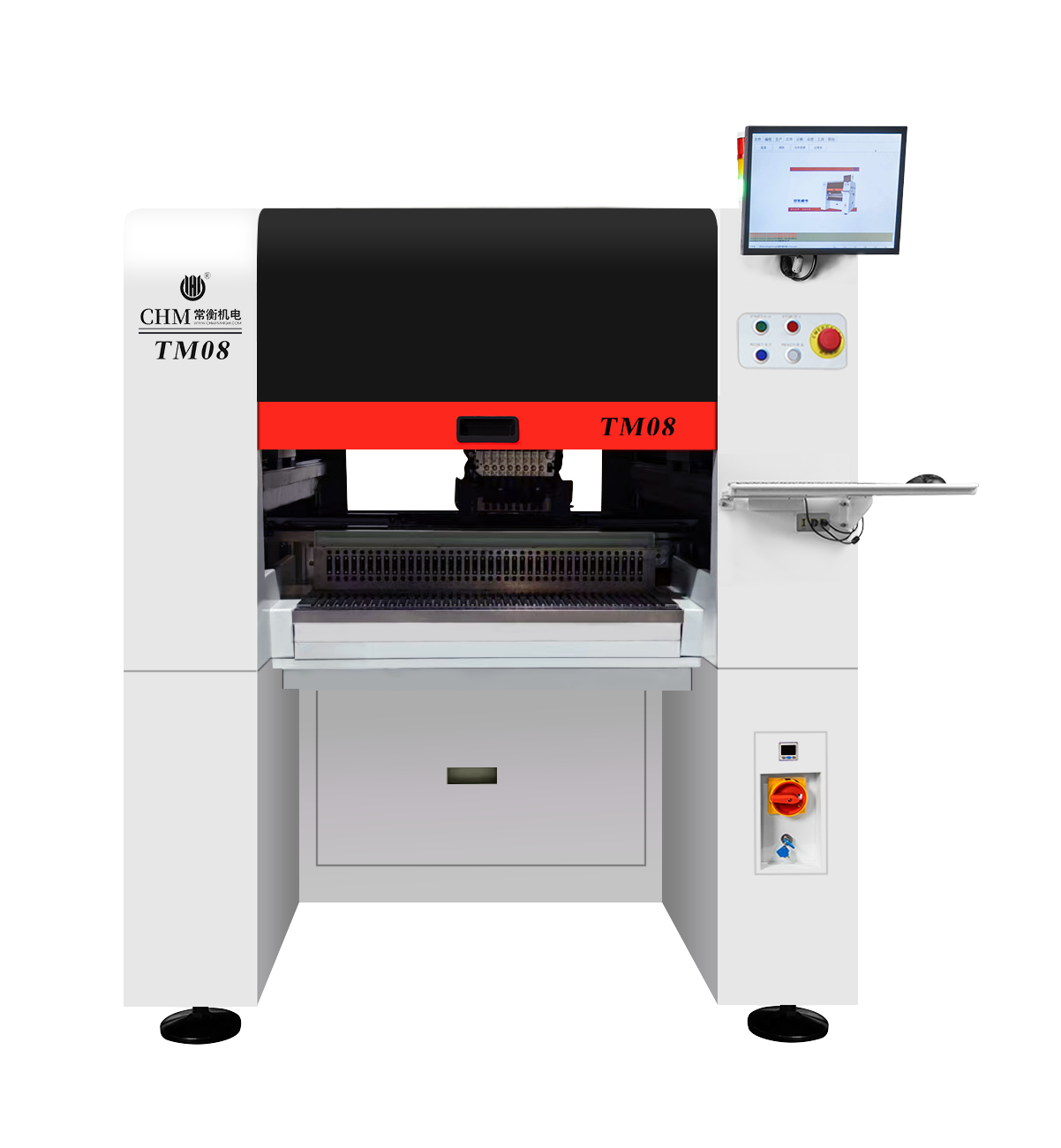Understanding SMT SMD Machines in PCB Assembly
What Are SMT and SMD Machines?
Surface Mount Technology (SMT) and Surface Mount Devices (SMD) play crucial roles in contemporary PCB assembly. SMT is a technique that allows electronic components to be mounted directly onto the surface of PCBs, eliminating the traditional need for drilling holes. This approach enhances manufacturing speed and reliability, as it accommodates smaller components that can perform complex tasks within reduced spaces. Meanwhile, SMD refers to the components themselves — these components are compact and designed to be mounted using SMT, resulting in efficient assembly processes. The adoption rate of SMT technology in electronics manufacturing has soared, with industry surveys revealing that it is integral to sectors such as consumer electronics, telecommunications, and automotive, thanks to its cost-effectiveness and precision.
Key Components of an SMT Production Line
An SMT production line consists of several specialized machines that work together seamlessly. The process begins with stencil printers, which apply solder paste to the PCB surface. Subsequently, pick-and-place machines accurately position SMD components, minimizing placement errors and maximizing production efficiency. Reflow ovens then complete the soldering process by melting and solidifying the paste, ensuring secure attachment of components. Each component plays a vital role: stencil printers provide the foundation for proper component placement, pick-and-place machines optimize speed and accuracy, while reflow ovens deliver superior soldering quality. To achieve optimal workflow, integrating these components harmoniously is essential, involving careful planning and coordination to ensure a smooth assembly process.
Role of SMD Technology in Modern Electronics
SMD technology is nearly ubiquitous across industries, including consumer electronics, automotive, and telecommunications. Its role in modern electronics is underlined by the push toward miniaturization and multifunctionality, which demands smaller, more efficient components capable of boosting device performance and design flexibility. SMD adoption trends are influenced by the need to fit more functionality into compact devices such as smartphones and smart home appliances. Expert opinions and case studies demonstrate how SMD technology streamlines manufacturing processes. For instance, it allows designers to create innovative, compact products without compromising on quality or functionality, significantly impacting product design while enhancing manufacturing efficiency.
Operating an SMT SMD Machine: Step-by-Step
Loading Solder Paste and Components
The initial stage in operating an SMT SMD machine involves loading solder paste onto the PCB. This process must be executed with precision as the correct application of solder paste ensures effective component adhesion and electrical connectivity. The solder paste is generally applied using a stencil that matches the PCB layout. It is crucial to use the right amount of paste and apply steady pressure to avoid errors. Once the solder paste is adequately applied, selecting and loading the components into the machine is vital. For optimal results, operators should ensure components are compatible with the design specifications and machine capabilities. Repeated checks at this stage can prevent alignment issues and future malfunctions during assembly.
Programming the PCB Machine for Assembly
Programming a PCB machine accurately is vital for efficient assembly and includes setting essential parameters and preparing assembly files. Using SMT software, operators must input design files, such as Gerber files, which contain detailed information on each layer of the PCB. These files guide the machine in placing components correctly. After uploading these files, calibration is paramount. Regular calibration ensures that the machines are precise, reducing the risk of misalignment and improving overall efficiency. This stage underlines the importance of a well-prepared setup before initiating full-scale production.
Initiating the SMT Manufacturing Process
Once all initial steps are taken care of, we move on to initiating the SMT manufacturing process. After proper alignment and programming, the machine starts the assembly process, involving accurate placement of components and soldering. It's important to monitor several factors during the first few runs. Operators should keep a close watch on temperature profiles within the reflow oven as overheating or underheating can affect solder joint quality. Additionally, regular alignment checks ensure components are correctly positioned. During these initial cycles, troubleshooting may be required to address common issues such as solder bridging or tombstoning. By maintaining vigilance and consistency in these early stages, the quality and reliability of the assembled PCBs can be significantly enhanced.
Optimizing SMT Machine Performance
Monitoring Solder Paste Application Quality
Maintaining high-quality solder paste application is crucial for optimal adhesion and performance in SMT processes. This involves various methods and tools to evaluate the application quality, ensuring that the paste uniformly adheres to the PCB pads. Advanced inline inspection systems, such as Automated Optical Inspection (AOI), can identify defects in real-time, providing a proactive approach to quality control. Statistics from industry studies reveal that rigorous quality control of solder paste application significantly enhances product yield and performance, underscoring its importance in SMT optimization.
Adjusting Placement Speed and Precision
Adjusting the placement speed and precision of components in SMT processes is vital for optimizing efficiency while preserving quality. Operators should follow guidelines that balance the speed of the pick-and-place machines with the accuracy required for precise component alignment. While increased placement speed can lead to higher throughput, it must be counterbalanced with precision settings to avoid misalignments or defects. Industry practitioners often emphasize the benefits of finding the optimal settings that maximize efficiency without compromising the integrity of the final product.
Routine Maintenance for Longevity
Routine maintenance is essential for ensuring the longevity of SMT machines and consistent performance over time. Establishing a comprehensive maintenance schedule helps operators anticipate and prevent common mechanical issues before they affect production. This involves regular inspections, cleaning, calibration, and component replacement as needed. Expert recommendations from leading SMT manufacturers highlight the importance of diligent maintenance practices, which not only enhance machine reliability but also contribute to smoother SMT manufacturing operations.
Hunan Charmhigh Electromechanical Equipment Co., Ltd.
Among the key players in the field, Hunan Charmhigh Electromechanical Equipment Co., Ltd. stands out for its comprehensive range of SMT SMD machines. The company specializes in providing advanced solutions that cater to various aspects of the SMT process, including precision pick-and-place machines, innovative stencil printers, and efficient reflow ovens. Charmhigh's commitment to quality and innovation has made it a preferred partner for industries looking to enhance their manufacturing capabilities with reliable SMT equipment.
Table of Contents
-
Understanding SMT SMD Machines in PCB Assembly
- What Are SMT and SMD Machines?
- Key Components of an SMT Production Line
- Role of SMD Technology in Modern Electronics
- Operating an SMT SMD Machine: Step-by-Step
- Loading Solder Paste and Components
- Programming the PCB Machine for Assembly
- Initiating the SMT Manufacturing Process
- Optimizing SMT Machine Performance
- Monitoring Solder Paste Application Quality
- Adjusting Placement Speed and Precision
- Routine Maintenance for Longevity
- Hunan Charmhigh Electromechanical Equipment Co., Ltd.

